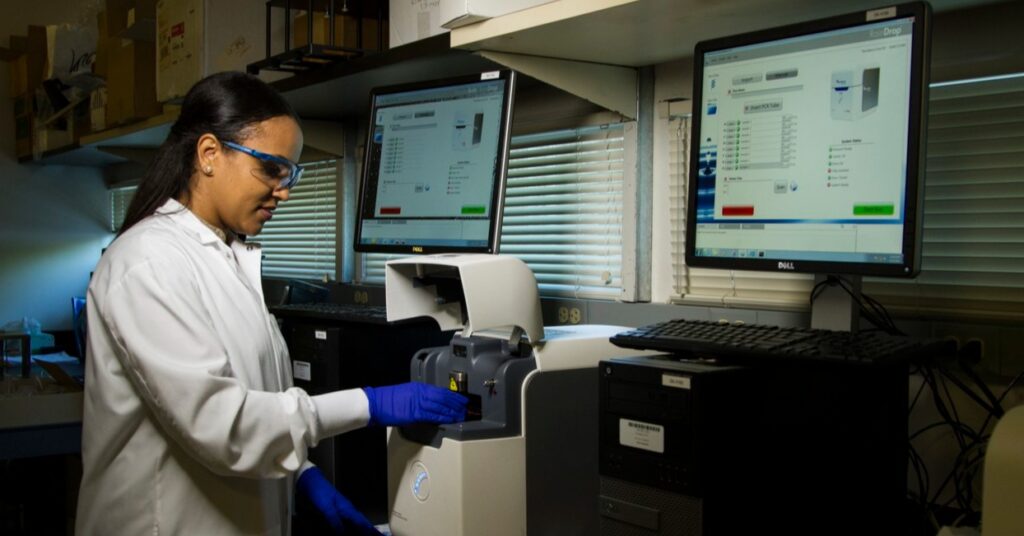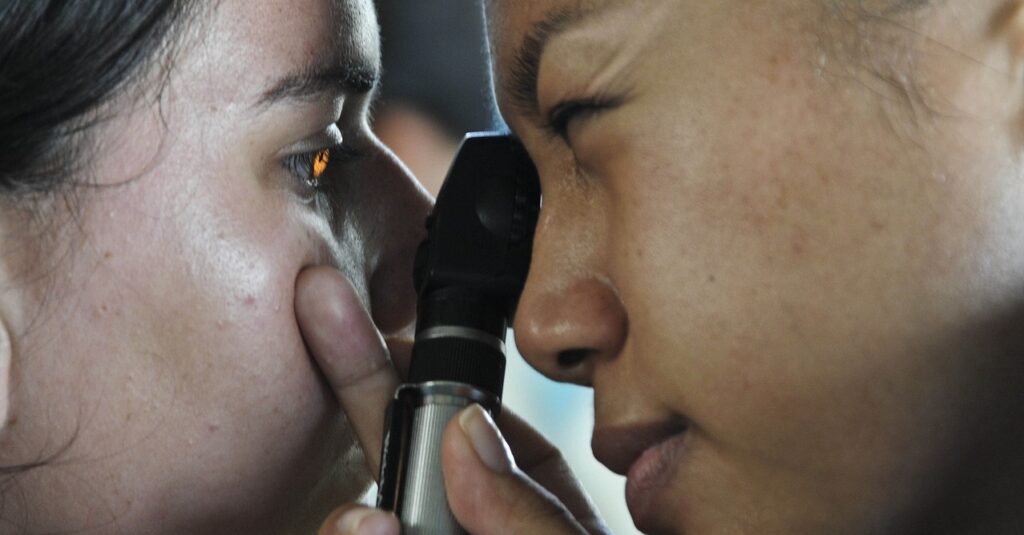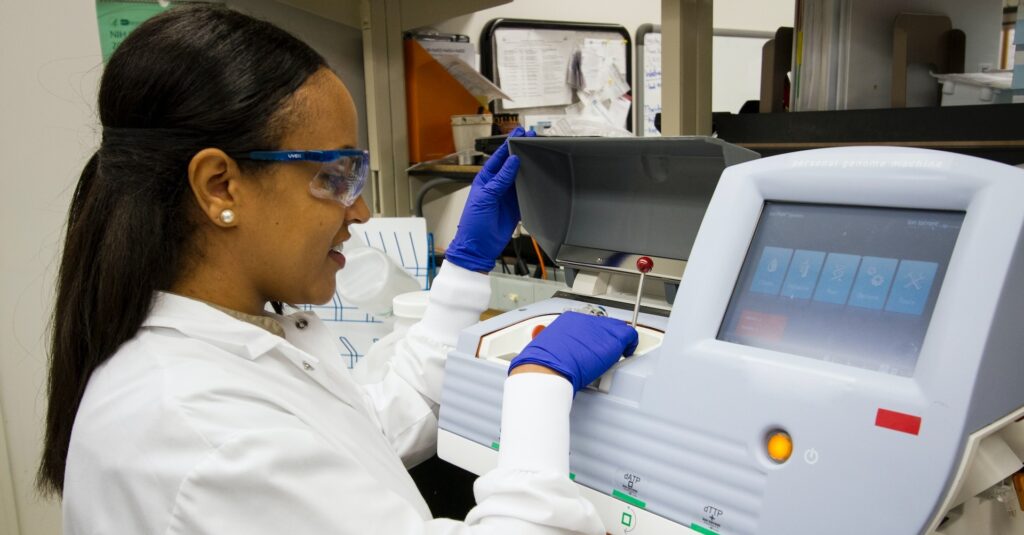
What Is the Epidemiological Triangle?
The epidemiological triad or triangle is an organized methodology used [...]

Like so many professions, healthcare lacks diverse representation. Optometry, alas, is no exception; according to Zippia research, whites constitute 75 percent of America’s optometrists, followed by Asians (16.1 percent), Hispanic/Latnix (3.8 percent), Black/African-American (2.7 percent), and Indigenous (0.1 percent).
There are some bright spots in the data: notably, a 50 percent increase in the number of African American optometry students and a 20 percent increase in the number of Hispanic/Latinx optometry students since the 2017-18 academic year. Also, women comprise nearly three-quarters of the optometry profession. It’s a start, but most agree there’s still a long way to go.
Optometry programs and member-based associations are taking action. They aim to increase their diversity, equity, and inclusion (DEI) efforts to attract a broader demographic to the profession, including individuals from underrepresented minority groups who currently make up less than 7 percent of the industry.
What DEI initiatives can optometry schools, professional associations, and the industry incorporate to increase representation, build a diverse pipeline, and cast a wider net to fill the applicant pool with candidates from varied ethnic groups? This article explores diversity and inclusion in optometry.
As the US population grows increasingly diverse, professionals in health-related fields rarely reflect the diverse communities they serve. That’s a problem: the Association of Schools and Colleges in Optometry (ASCO) Guidelines for Culturally Competent Eye and Vision Care stress the importance of embedding cultural awareness and sensitivity into optometry education programs and fostering inclusive cultures. That’s in part because so many communities prefer healthcare professionals who look like them.
The longstanding history of racial and ethnic health care disparities heightened during the COVID-19 pandemic in 2020. In a peer review paper published in Optometric Education, the authors explore the ways in which diverse environments help shape health equity-conscious practices, participatory decision-making, shared understanding, and other cultural competency methods. Conversely, patients are more vulnerable to unconscious bias or cultural stereotyping, distrust, untimely treatment, and increased risk of liability or malpractice issues without these environments.
2020 also marked a year of racial awakening amid nationwide protests following the deaths of George Floyd and Breonna Taylor at the hands of police. Following a public outcry, corporations of all sizes and all industries issued statements or created task forces and committees to improve or implement DEI efforts addressing social inequities and injustices. Many companies also made commitments to increase diverse representation within their organizations.
While optometry has remained a woman-dominated profession, Black women make up only two percent of practicing optometrists. In addition, the ASCO reported that Black students represented just 3.2 percent of those enrolled in an accredited optometry program during the 2019-2020 academic year. Three initiatives aim to increase racial diversity in optometry schools:
Within optometry schools, student organizations and clubs connect students of diverse backgrounds to promote diversity, equity, and inclusion. For example, NECO’s student organizations include LaVista, an organization that teaches members how to perform an eye exam in Spanish; the National Optometric Student Association (NOSA), which promotes delivering vision care to underserved communities; and Prism, an LGBTQIA+ ally organization.
The University of California Berkeley‘s Herbert Wertheim School of Optometry & Vision Science has formed a DEIB Council with the mission statement “to identify and support opportunities to improve diversity, equity, inclusion, and belonging within Berkeley Optometry.” These opportunities include student recruitment efforts and faculty hiring processes.
The State University of New York (SUNY) College of Optometry aims to enroll a diverse student body that reflects the diverse communities they serve through three pillars: representativeness and equality; understanding, acceptance, and respect; and minimizing implicit biases. Their campus also has a National Optometric Student Association (NOSA) dedicated to advancing the visual health of underserved communities by training optometry students to serve those populations.
As part of their strategic plans, many optometry schools are making efforts to increase diversity within the industry by educating and building a diverse pipeline of future optometrists and eye care professionals.
DEI efforts within optometry schools focus on student recruitment, diverse representation within college faculty, and infusing cultural competencies into academic teachings. So what happens when these optometry students graduate and become licensed optometrists? Often (if they were not already student members), many become members of associations that provide year-round professional development through webinars and networking opportunities to connect with industry peers. Professional associations also offer continuing education credits for optometrists to remain licensed and provide opportunities for members to earn esteemed credentials in the industry, such as becoming a Fellow.
The American Optometric Association (AOA) developed a Diversity and Inclusion Task Force focused on these initiatives:
The American Academy of Optometry (AAO) has also developed a strategic plan that includes the implementation of a Diversity Task Force to expand the membership to reflect the diverse communities they serve and to build leaders of color in the industry.
Also recognizing the lack of ethnic diversity in optometry, the National Optometric Association (NOA) launched an HBCU mentorship program, Visioning the Future. This program, in partnership with the Dr. Marvin R. Poston OD Education and Development Donor Advised Foundation and VSP Vision, builds relationships with HBCU students to help guide their professional development and career advancement in optometry.
Sherrol Reynolds, OD, FAAO, an associate professor and Chief of Advanced Ophthalmic Care at Nova Southeastern University, noted that an increasingly diverse patient population “will require personalized approaches to meet their visual and healthcare needs.” To address these challenges, she urges an increased focus on diversity, equity, and inclusion in the optometry profession.
In addition, AOA Board of Trustees member Jacqueline M. Bowen cites three primary reasons why equal opportunity matters in optometry:
Organizations within the field of optometry must continue putting action behind their words by providing staff training and resources and holding speaker series and panels featuring diverse voices in optometry. These continued conversations and partnerships with student organizations create more exposure to the profession where underrepresented minorities can see “someone who looks like them” and realize an opportunity exists.
A Doctor of Optometry (O.D.) degree from an accredited program is required to practice optometry. Optometry school admission is quite competitive, with only 23 accredited programs in the United States. DEI efforts such as the Black EyeCare Perspective pre-optometry club, Impact HBCU, and the Visioning the Future HBCU mentorship program prove beneficial in facilitating the admission process. In addition, some schools have partnered with organizations, such as NECO and eyewear brand Warby Parker, to provide scholarships dedicated to increasing diverse representation in optometry.
Successfully passing the National Board of Examiners in Optometry (NBEO) is the final step to becoming a licensed optometrist. It takes roughly nine years of educational training and clinical experience before sitting for your board exam. This timeline includes your undergraduate studies, four years of optometry school, and an optional one-year residency program.
Currently, all accredited optometry schools and colleges offer traditional on-campus programs only. NECO, the first optometry school to sign on to the 13% Promise, aims to become the first accredited program to offer a hybrid Doctor of Optometry (OD) degree that will allow students to earn the degree remotely. Dr. Howard Purcell, president and CEO of the New England College of Optometry, notes that 33 states do not have an optometry school. Furthermore, roughly 1,000 optometry positions remain unfilled annually, mostly in rural areas. Expanding optometric education into a hybrid format can potentially expand access to patients in rural or underserved areas.
As optometry programs, professional associations, and the field as a whole, aim to increase diverse representation in optometry, continued DEI efforts can grow awareness and opportunity among underrepresented minority groups. And, in turn, create equitable and inclusive environments that positively impact patient care.
.
Questions or feedback? Email editor@noodle.com

The epidemiological triad or triangle is an organized methodology used [...]

A family nurse practitioner (FNP) provides comprehensive primary health care [...]

FNPs practice in a broad range of health care settings. [...]

Some epidemiologists assist pharmaceutical companies in developing safer medicines. Some [...]

A Bachelor of Science in Nursing (BSN) is a four-year [...]
Categorized as: Optometry, Nursing & Healthcare